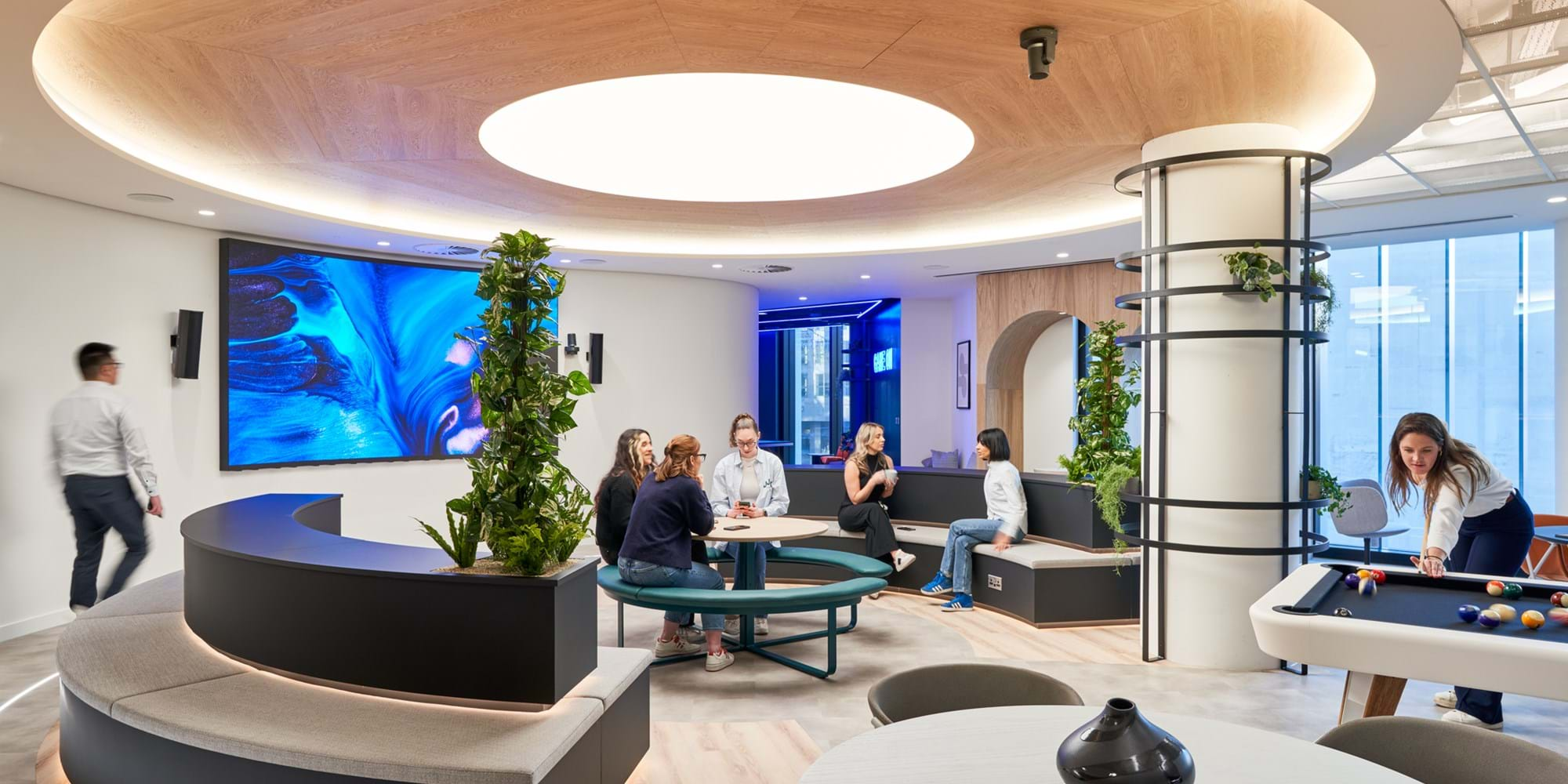Pioneering Spaces: Celebrating Women in Workplace Design
As we mark International Women's Day 2024, Modus reflects on the recent history of female professionals in the workplace design sector. Over the past century, women have evolved from peripheral figures in the design industry to central forces, shaping the environments we navigate daily, and making these environments more accessible, welcoming, and productive for all. This article celebrates the indomitable spirit and invaluable contributions of women in workplace design, and looks to a future of innovative, empowering and inclusive working environments.
Trailblazers of the Early 20th Century
Although professional opportunities in the interior design industry were scarce for women in the early 20th century, pioneers still emerged. One such woman was American architect and furniture designer, Florence Knoll Bassett, who redefined post-war workplace standards with the creation of her revolutionary Knoll Planning Unit. Rooted in careful workplace observation and analysis of her clients’ use patterns, Knoll’s ideas drove the design success of Knoll Associates for over 20 years. Her holistic approach to workplace design, emphasising open workspaces and ergonomic furniture, continues to underpin the functionality and aesthetics of many contemporary offices today.
Mid-Century Milestones
In the mid-20th century, the voices of women in design grew stronger, and though often overshadowed by their male counterparts, women like Ray Eames and Aino Aalto were instrumental in shaping modern design philosophies. Their work incorporated human-centric designs that fostered a growing demand for collaboration and comfort in office settings. Lina Bo Bardi’s work had a similar impact; her innovative use of space and materials focussed on nurturing social interaction and community within shared spaces, an integral principle of successful modern workplaces. These contributions by Eames, Aalto, and Bo Bardi emphasise the significance of including female perspectives in order to design work environments that are inspiring and engaging for all.
Design Innovations Surge in the Late 20th Century
The latter part of the 20th century witnessed a surge in workplace innovation, spearheaded by women such as Gae Aulenti and Zaha Hadid who challenged the status quo with their bold and futuristic designs. Aulenti's work on the Musée d'Orsay demonstrated her ability to blend historical elegance with modern functionality, while Hadid's fluid and innovative structures emphasised movement and encourage interaction, both integral aspects of any thriving workspace.
Alongside this, British designer Roz Barr stands out for her forward-thinking approach to adaptive reuse and sustainable office design. Her work in transforming historic buildings into modern workspaces celebrated the potential of retrofits, and her voice was a valuable one in turning the tide towards more sustainable office fit outs.
American architect Julia Morgan also produced several ground-breaking designs during this period that emphasised the importance of light, space, and occupant wellbeing, influencing the development of healthier workplaces and paving the way for biophilic design elements that have become a prerequisite of successful modern workplaces.
The 21st Century: A Diverse Future
Entering the 21st century, the focus has shifted towards sustainability, flexibility, and wellness in the workplace. Building on Morgan’s work, women like Jeanne Gang and Kazuyo Sejima are pushing the boundaries of design to further improve ecological sustainability and employee well-being. Their projects highlight the importance of creating spaces that not only inspire productivity and creativity but also promote health and a sense of community.
Research and insights have also expanded in this period, with the notable release of Invisible Women in 2019, in which Caroline Criado Perez draws together findings that highlight the gender data gap, sparking a renewed effort to gather precise insights and data for all workplace employees. Additionally, "Designing for Gender Equality in the Developing Context," examines how a diverse design team, with a balanced representation of women, leads to more comprehensive and thoughtful design solutions, particularly in workplace and urban development projects.
The Importance of Female Voices in Workplace Design
Reflecting on the past century, it's clear that the journey of women in workplace design has been one of perseverance, innovation, and profound impact. The influence of women in workplace design is undeniable, and female contributions have led to a more inclusive, healthy and sustainable working environment for all employees. As the focus of workplace design shifts towards sustainability, neuro-inclusion, and future-proofing for the changing needs of tenants, Modus recognises that it is only through championing a multitude of perspectives that we can truly create workspaces that are empowering, productive and inclusive for all.
While we have chosen to use this International Women's Day as an opportunity to celebrate the contributions and legacies of the women who have shaped our day-to-day working environments, we acknowledge the ongoing need to elevate female voices in design, and commit to supporting and encouraging the next generation of women to dream big, break barriers, and create spaces that reflect the best of who we are.
“As a design team, we are very fortunate to have Vidhi Sharma (Creative Director at Modus) leading us. Her insights guide us toward thoughtful, high-quality designs, that uphold Modus’ sustainability values, while encouraging our individual expressions and contributions, ensuring that each design reflects the unique and diverse perspectives in our team.” Carol Man, Modus Designer




